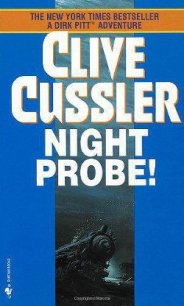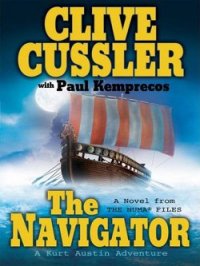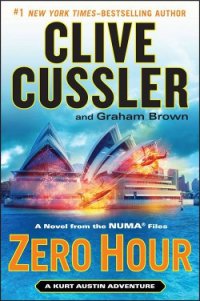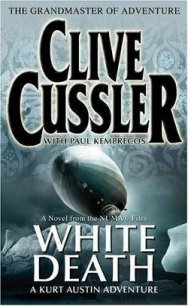Inca Gold - Cussler Clive (читать онлайн полную книгу .TXT) 📗
"Strange that the Inca simply didn't attack and overwhelm the Spanish," said Gunn. "They must have outnumbered Pizarro's troops by a hundred to one.
"Closer to a thousand to one," said Yaeger. "But again, as with Cortez and the Aztecs, the sight of fierce bearded men wearing iron clothes no arrow or rock could penetrate, riding ironclad horses, previously unknown to the Incas, while slashing with swords and shooting matchlock guns and cannons, was too much for them. Thoroughly demoralized, Atahualpa's generals failed to take the initiative by ordering determined mass attacks."
"What of Huascar's armies?" asked Pitt. "Surely they were still in the field."
"Yes, but they were leaderless." Yaeger nodded. "History can only look back on a what-if situation. What if the two Inca kings had buried the hatchet and merged their two armies in a do-or-die campaign to rid the empire of the dreaded foreigners? An interesting hypothesis. With the defeat of the Spanish, God only knows where the political boundaries and governments of South America might be today."
"They'd certainly be speaking a language other than Spanish," commented Giordino.
"Where was Huascar during Atahualpa's confrontation with Pizarro?" asked Sandecker, finally lighting his cigar.
Imprisoned in Cuzco, the capital city of the empire, twelve hundred kilometers south of Caxanarca."
Without looking up from the notations he was making on a legal pad, Pitt asked, "What happened next?"
"To buy his liberty, Atahualpa contracted with Pizarro to cram a room with gold as high as he could reach," answered Yaeger. "A room, I might add, slightly larger than this one."
"Did he fulfill the contract?"
"He did. But Atahualpa was afraid that Huascar might offer Pizarro more gold, silver, and gems than he could. So he ordered that his brother be put to death, which was carried out by drowning, but not before Huascar ordered the royal treasures to be hidden."
Sandecker stared at Yaeger through a cloud of blue smoke. "With the king dead, who carried out his wish?"
"A general called Naymlap," replied Yaeger. He paused and used the pointer to trace a red line on the map that ran from the Andes down to the coast. "He was not of royal Inca blood, but rather a Chachapoyan warrior who rose through the ranks to become Huascar's most trusted advisor. It was Naymlap who organized the movement of the treasury down from the mountains to the seashore, where he had assembled a fleet of fifty-five ships. Then, according to the quipu, after a journey of twenty-four days, it took another eighteen days just to load the immense treasure on board."
"I had no idea the Incas were seafaring people," said Gunn.
"So were the Mayans, and like the Phoenicians, Greeks, and Romans before them, the Incas were coastal sailors. They were not afraid of open water, but they wisely beached their boats on moonless nights and during stormy weather. They navigated by the sun and stars and sailed with prevailing winds and currents up and down the shoreline, conducting trade with the Mesoamericans in Panama and perhaps beyond. An Inca legend tells of an early king who heard a tale about an island rich in gold and intelligent people, that lay far out beyond the horizon of the sea. With loot and slaves in mind, he built and rigged a fleet of ships, and then sailed off with a company of his soldiers acting as marines to what is thought to be the Galapagos Islands. Nine months later he returned with scores of black prisoners and much gold."
"The Galapagos?" wondered Pitt.
"As good a guess as any."
"Do we have any records of their ship construction?" Sandecker queried.
"Bartholomew Ruiz, Pizarro's pilot, saw large rafts equipped with masts and great square cotton sails. Other Spanish seamen reported sailing past rafts with hulls of balsa wood, bamboo and reed, carrying sixty people and forty or more large crates of trade goods. Besides sails, the rafts were also propelled by teams of paddlers. Designs found on pre-Columbian clay pottery show twodecker boats sporting raised stem and sternposts with carved serpent heads similar to the dragons gracing Viking longships."
"So there is no doubt they could have transported tons of gold and silver long distances across the sea?"
"No doubt at all, Admiral." Yaeger tapped the pointer on another line that traced the voyage of Naymlap's treasure fleet. "From point of departure, north to their destination, the voyage took eighty-six days. No short cruise for primitive ships."
"Any chance they might have headed south?" asked Giordino.
Yaeger shook his head. "My computer discovered that one coil of knots represented the four basic points of direction, with the knot for north at the top and the knot for south at the bottom. East and west were represented by subordinate strands."
"And their final landfall?" Pitt prodded.
"The tricky part. Never having the opportunity to clock a balsa raft under sail over a measured nautical mile, estimating the fleet's speed through water was strictly guesswork. I won't go into it now, you can read my full report later. But Brunhilda, in calculating the length of the voyage, did a masterful job of projecting the currents and wind during 1533."
Pitt put his hands behind his head and leaned his chair back on two legs. "Let me guess. They came ashore somewhere in the upper reaches of the Sea of Cortez, also known as the Gulf of California, a vast cleft of water separating the Mexican mainland from Baja California."
"On an island as you and I already discussed," Yaeger added. "It took the crews of the ships twelve days to stash the treasure in a cave, a large one according to the dimensions recorded on the quipu. An opening, which I translated as being a tunnel, runs from the highest point of the island down to the treasure cave."
"You can conclude all this from a series of knots?" asked Sandecker, incredulous.
Yaeger nodded. "And much more. A crimson strand represented Huascar, a black knot the day of his execution at the order of Atahualpa, whose attached strand was purple. General Naymlap's is a dark turquoise. Brunhilda and I can also give you a complete tally of the hoard. Believe me when I say the bulk sum is far and away more than what has been salvaged from sunken treasure ships during the last hundred years."
Sandecker looked skeptical. "I hope you're including the Atocha, the Edinburgh, and the Central America in that claim."
"And many more." Yaeger smiled confidently.
Gunn looked puzzled. "An island, you say, somewhere in the Sea of Cortez?"
"So where exactly is the treasure?" said Giordino, cutting to the heart of the lecture.
"Besides in a cavern on an island in the Sea of Cortez," summed up Sandecker.
"Sung to the tune of `My Darlin' Clementine,' " Pitt jested.
"Looks to me," Giordino sighed, "like we've got a hell of a lot of islands to consider. The Gulf is loaded with them."
"We don't have to concern ourselves with any island below the twenty-eighth parallel." Yaeger circled a section of the map with his pointer. "As Dirk guessed, I figure Naymlap's fleet sailed into the Gulf's upper reaches."
Giordino was ever the pragmatist. "You still haven't told us where to dig."




